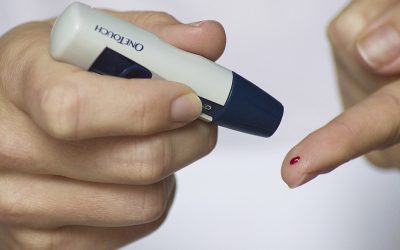Osteoporosis
Each year in the United States, 1.3 million people over 45 years of age experience bone fractures associated with osteoporosis. For women, the most rapid rate of bone loss occurs in the first five years after menopause, beginning around age 45 when body hormone supplies undergo a dramatic change. The rate of bone loss then drops to about 1 per cent per year.
Osteoporosis can be caused by decreased levels of estrogen and progesterone, hormones that play important roles in bone building. The disease can also result from a poor diet and insufficient exercise. It is important to avoid calcium inhibitors in the diet. Assimilation of calcium is inhibited by coffee, soft drinks, diuretics, excess protein (especially red meat and dairy), refined sugar or any concentrated sweetener, fluoride, white flour products, steroid therapy (including prednisone and cortisone), alcohol, cigarette smoking, too little or too much exercise, excess salt and the nightshade vegetables (which include tomatoes, potatoes, eggplant and peppers) that contain solanine, a calcium inhibitor. Chocolate, cooked spinach and rhubarb bind calcium and inhibit or prevent absorption of calcium. They also contain calcium oxalate – which is what kidney stones are made of, along with calcium phosphate and uric acid.
Processed foods lead directly to calcium loss because these foods are nutrient deficient. This in turn stimulates a need for protein, which when consumed in high amounts, can cause the body to lose calcium. The body cannot store protein, and the excess is metabolized and excreted in urine. Excess protein creates an excess of the waste products that result from the breakdown of protein, including ammonia and acids. Ammonia prevents calcium from being reabsorbed by the kidneys. The acids, which need to be buffered by calcium, also deplete the bones of this mineral.
Another source of calcium loss is a high sodium diet. Women eating 3,900 mg of sodium daily excreted 39% more calcium than those eating 1,600 m. daily. Sugar has been linked to loss of calcium as well, and can cause metabolic problems that eventually lead to mineral imbalances. Soft drinks and caffeine also put bones at risk. Soft drinks are high in phosphorus which can lead to high levels of phosphorus in the blood. Since the body needs to maintain blood levels of phosphorus and calcium in equal amounts, high phosphorus causes calcium to be drawn from the bones to meet the demand. Caffeine not only increases calcium excretion in the urine, but also allows more calcium to be secreted into the gastrointestinal tract. One study found that individuals who drink more than 3 cups of coffee a day increase their risk of osteoporosis by 82%.
There are two sets of cells that build up bones and take apart bones. Osteoclasts “chew up” the bone, taking it apart in a process called reabsorption. At the same time, other cells called osteoblasts knit together collagen (connective tissue) and form the bony matrix that gives bone its staying power. As they form a fibrous mesh, the osteoblasts get stuck in this structure and remain within the bone. Progesterone is the hormone that stimulates monthly ovulation, but it also stimulates bone formation by stimulating osteoblast – mediated mineralization of bone. Before menopause actually begins, the body starts to decrease its output of progesterone. A lack of progesterone causes bones to slowly lose their mass even prior to menopause. With a combination of low progesterone and poor diet, osteoporosis may already be well underway as women approach menopause. Then, when menstruation ceases, osteoporosis accelerates because estrogen levels fall, and the already diminished bone mass is even more rapidly depleted.
Natural progesterone found in Nature’s Sunshine Pro-G-Yam Cream can be used as a deterrent for osteoporosis. It is virtually the same molecule as progesterone the body makes. According to John R. Lee, M.D. of Sebastapol, California, a treatment program of diet, nutritional supplementation, and natural transdermal (absorbed through the skin) progesterone is virtually 100% successful in building bone mass. “The average increase in bone mass was 15% – while women with the lowest bone mass density scores gained over 40%.”
High levels of thyroxin, a hormone secreted by the thyroid gland, stimulates minerals to be drawn out of the bones as part of the natural and ongoing process of bone remodeling. In hyperthyroidism, an excess of thyroxin causes excess bone depletion. Thyroid medication, which supplies thyroid hormone to the body, functions in the same way.
Calcium supplements are recommended. The more soluble forms of calcium are calcium citrate, calcium lactate and calcium aspartate. The co-factors for calcium absorption are phosphorus, boron, magnesium, manganese and Vitamin D. Boron, a trace mineral essential to the parathyroid, has recently been shown to have a positive effect on calcium and active estrogen levels in post-menopausal women. Increasing boron in the diet increases blood levels of both estrogen and progesterone. Boron has been added to Nature’s Sunshine’s Skeletal Strength and Calcium/Magnesium formulas. Be sure you are getting enough sunshine on your retinas and pineal to obtain vitamin D for calcium absorption – or take 350 iu per day. A thirty-minute sunbath will provide 300-350 units of vitamin D.
New studies have demonstrated soy’s unique ability to restrict calcium loss and retain bone mass to prevent osteoporosis, so soy is a supplement that we all probably should take for prevention as we grow older. Soy based foods are tofu, tempeh and meat substitutes. Nature’s Sunshine supplies soy concentrate in capsules by the name of Phyto-Soy.
Horsetail is a rich source of silicon that dramatically increases the strength of the bones, making them more tough and resilient and giving them flexibility. It should be used in small amounts to avoid irritating the kidneys. Horsetail is also available in Nature’s Sunshine’s HSN-W combination which supplies seaweed to feed the glands, particularly the thyroid. CA is another silicon combination from Nature’s Sunshine. Silicon is a mineral which the body can transmute into calcium.
Fruits and vegetables such as apples, carrots, grapes, pears and leafy vegetables are the best source of boron. An 8 oz. glass of carrot juice has 100-200 mg of calcium. The highest quality organic carrots processed with a good juicer can supply 300-400 mg of calcium, almost half your daily requirement in just 8 oz of juice – and you assimilate all of it! Limit red meat to twice or a few times a week. Avoid excessive protein and all soft drinks. Also, limit alcohol consumption and restrict intake of fat, caffeine and salt which are implicated in excessive calcium loss.

More Articles
How I Fixed my Blood Sugar
I USED TO have pre-diabetes! I went on a journey to rid myself of my blood sugar issues and I wanted to share it with all of you.
I had a blood sugar issue.
In fact, for two years, I was pre-diabetic. After running a DNA test, I discovered that I had 2 variants for type II Diabetes!
Enhance your Brain!
CBS Health News today tweets an article about preventing dementia with learning music. www.cbc.ca/news/health/learning-music-early-builds-up-brain-s-reserves-against-dementia. It reminds me of reading about a brain issue that a client recently came in with.
Imbalances Happen to Everyone!
It all started this past summer. I was at the pool, trying to give blood during the blood drive. I take the pre-requisite hemoglobin test to determine eligibility to give and FAIL. My hemoglobin was LOW! I had been on a daily salad binge and did liquid chlorophyll with regularity in my water. How could I have low hemoglobin?
Invest in Self Care
Why Invest in Your Own Self (Care)
Why not just start with stress. We all have it, (most all of us). When not managed it can cause many symptoms!
Plagued by Depression, Mood Swings and Anxiety?
Ninety-five percent of our neurotransmitters are in our gut. So does this explain when we are constipated why we are so grumpy – I’d say “YES”. We only have one-two percent located in our central nervous system, (our brain and spinal column).
How to Read a Label
One of the things I do is teach people how to eat. When you go grocery shopping the best place to start is the labels on the sides of all the boxes and bags. The ingredients list has always been there. I look for a few things on every label.
Children’s Medicine Cabinet
Here are some ideas to help start your natural medicine cabinet. These are either liquid – in glycerine or powder you can add to juice. VS-C for viruses and liver/immune problems OREGON GRAPE for bacterial infections ULTIMATE ECHINACEA for immune, lymphatic, headache, achy, fevers and chills
Men Go Through Menopause Too!
Okay, I hear men – have for 15 years – starting with my father when my mother was going through menopause, talk about the woman in their life going through menopause and how hard it is on them. But, I have rarely heard women talk about the husband’s version of menopause, called andropause.
Call
(336) 456-4743
Visit
3723 W Market St, Unit B
Greensboro, North Carolina 27403

